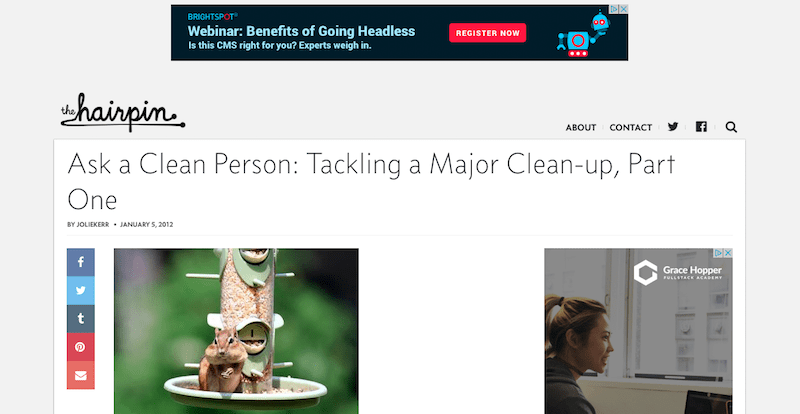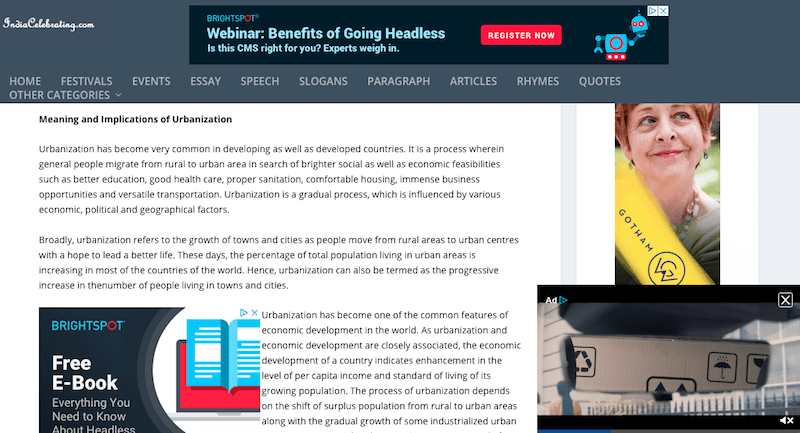How To Monetize A Blog With Affiliate Marketing
Running a blog can involve a fair amount of work. Aside from all the time spent writing and researching posts, blogs come with fixed costs. As a result, you may find yourself pouring more time and money into your blog than you are getting out of it.
Fortunately, there's a way to reap the rewards of all your hard work. Once you've established a name for yourself, you may want to look into monetizing your blog. Monetization techniques, including affiliate programs and reseller hosting, can be an excellent way to turn your hobby into a side hustle.
This article will discuss five of the best ways to monetize your blog. Let's get a move on!
A Brief Introduction to Monetization
Blogging can be a fun way to turn your hobby into a side hustle. We've all heard the tales about those who turned their blogs into fortunes. While those possibilities are exciting, there are also ways you can monetize your blog right now without waiting for your 'big break'.
Once you've established your blog as a valuable asset with a strong readership, people may be willing to pay you in various ways. For example, you can provide a service such as hosting advertisements, or adding affiliate links to your content. You can also go the membership route, reserving some content behind a paywall and charging for access to it.
Of course, you should remember that there's no "get rich quick solution". All of the tried-and-true monetization techniques will require some effort and patience. Your income usually depends on the amount of traffic you drive to the blog by creating engaging content, which takes time.
5 Ways to Monetize Your Personal Blog
Now that we've gone over the basics of monetization, let's review five of the specific ways you can build a business that's based on your blog.
1. Ad Hosting
This first technique is just what it sounds like – you agree to post ads on your blog, and in return you are paid for the number of clicks they receive or sales they lead to. You can either sign up for an ad network, which will connect you with ad providers for a fee, or find sponsors and sell your own ads.
The monetization structure of ad networks is usually pay per click (PPC). This means you are paid based on the number of people who click on your site's ads. If you find your own sponsors, however, you may have more flexibility and control over payment schemes. If you need to create your own ads, it's easy to do so in Easy Affiliate. You can quickly create banner ads with custom links that will track visits that came from your site.
Note that you'll want to strike a balance with this technique, and be careful not to plaster your blog with too many ads. On the blog pictured below, for example, there is a top banner and a side ad on the right, but there's still plenty of white space between them to make the article readable:

However, in the more cluttered example pictured below, there is a top banner ad, a sidebar ad on the right, and an ad in each bottom corner of the screen. One of these is a video ad, which is especially distracting:

Having too many ads can harm your blog by driving viewers away. People tend to dislike sites like this, where there are so many ads that they feel intrusive. A better balance enables visitors to quickly scroll past ads if they're not interested and focus on what they came for – your content.
2. Affiliate Programs
Another popular monetization technique is to run an affiliate program. This involves promoting other companies' products, and earning a commission on each purchase that's made through one of your referral links. Affiliate programs can also encompass ad hosting.
You can run programs like this using either an affiliate network or self-hosted affiliate software. Affiliate networks are services that connect you to one or more companies but sign you up to the terms of their programs. On the other hand, with affiliate software, you can set up your own program, but you're also responsible for finding sponsors.
There are pros and cons to each method – typically, affiliate networks come with higher fees and more rigidity, whereas affiliate software enables you to design a program with as much flexibility as you want. If you decide to use self-hosted affiliate software, Easy Affiliate provides an easy solution for WordPress users.

3. Paid Reviews
If your blog is connected to a product or service, you can also look into paid reviews. There are many companies that are willing to pay bloggers to write reviews of their products. Some of these may offer the product itself in exchange for an honest review (i.e., free books for a literary blog), but some also pay in cash.
If you want to get paid for doing reviews, you could try searching for a specific product or type of item that your blog's audience would be interested in, such as makeup or video games. If your blog has a large following, you can also pitch companies directly and ask for free samples or payment.
Remember to balance your content, however. If your blog is largely made up of paid reviews, it may start to feel spammy and even untrustworthy. It's best to continue posting the valuable content that drove visitors to your blog in the first place, and to follow the 80/20 principle – keep your sponsored content to no more than 20% of your blog.
4. Reseller Hosting
Reseller hosting is another popular income generation method. You purchase a large amount of server space from a hosting provider, and resell it at a profit to multiple customers.
This may be appropriate for you if you run a blog about web services, or if you're a developer or a designer who can sell hosting to the clients you build websites for. This way, you know that the people visiting your blog either run a website or are interested in doing so, and are likely to be in need of hosting.
Fortunately, there are many hosting providers that offer reseller hosting, and setting it up isn't hard. There are some pros and cons to this technique – it may be a risk to invest in hosting services and be unable to sell them. However, if you have a strong client base that is interested in web services, the rewards can potentially be great.
5. Members-Only Content
Finally, one more profitable way to monetize your blog is by setting up a membership site. This is a type of "freemium" site where you offer some content for free, and lock some of it away behind a paywall.
Users can browse your site to see if they think your content is valuable, but they have to subscribe if they want to see all of it.
With a membership site plugin like MemberPress, you have complete control over your monetization structure. Plus, Easy Affiliate is included with MemberPress, which means you can implement both membership and affiliate features on your blog at the same time.
Conclusion
While running a personal blog can be rewarding, it comes with a significant amount of hard work and various costs. Once you've established your blog, you may want to capitalize on your investment by monetizing it.
Fortunately, there are many ways to do so. Four simple ways to monetize your personal blog include:
- Ad hosting
- Affiliate programs
- Paid reviews
- Reseller hosting
- Members-only content
Do you have any questions about how to monetize your personal blog? Let us know in the comments section below!
If you liked this post, be sure to follow us on Twitter, Facebook, and LinkedIn! And don't forget to subscribe in the box below.
Affiliate Link Disclosure
How To Monetize A Blog With Affiliate Marketing
Source: https://easyaffiliate.com/blog/monetize-your-personal-blog/
Posted by: petersonhypect1953.blogspot.com

0 Response to "How To Monetize A Blog With Affiliate Marketing"
Post a Comment